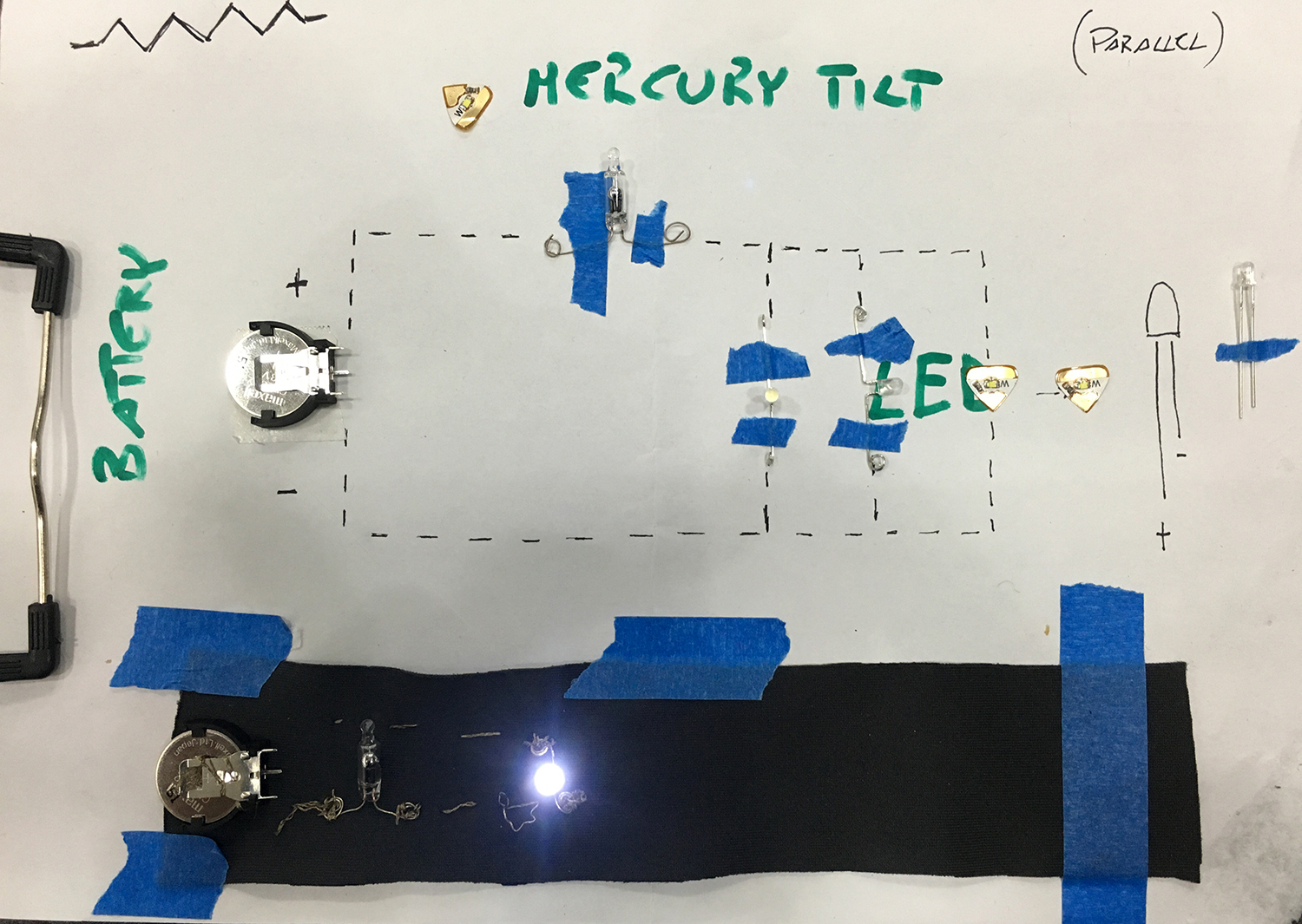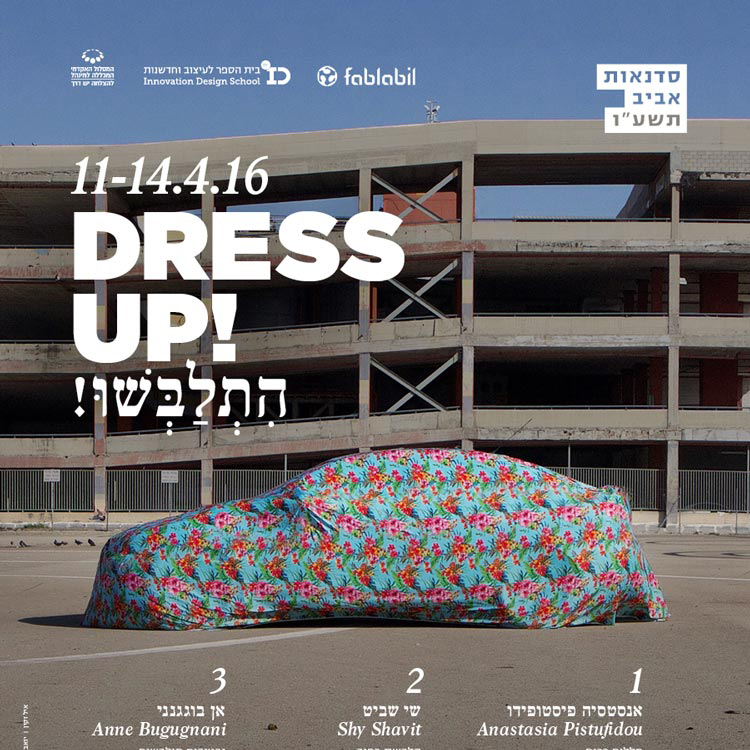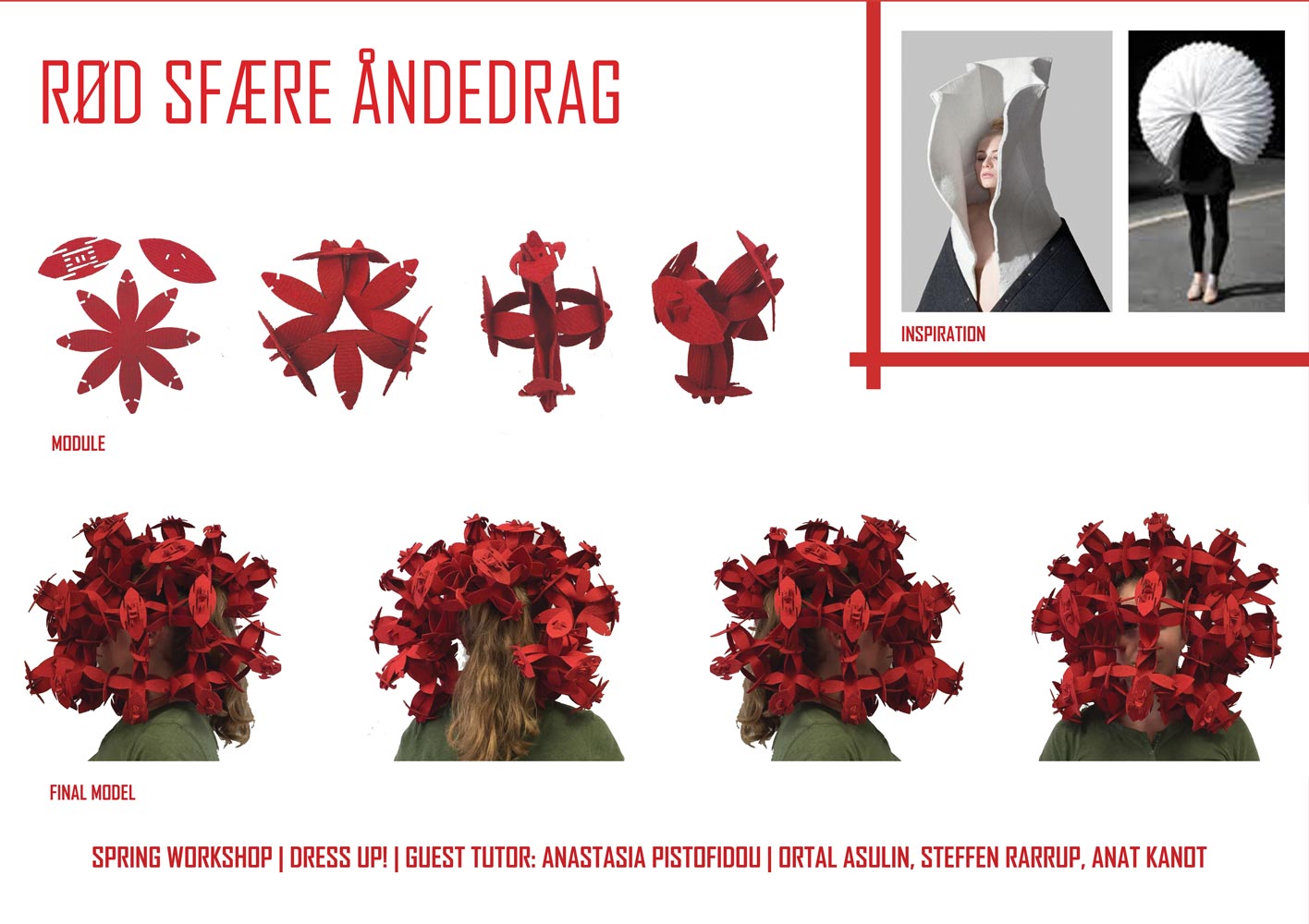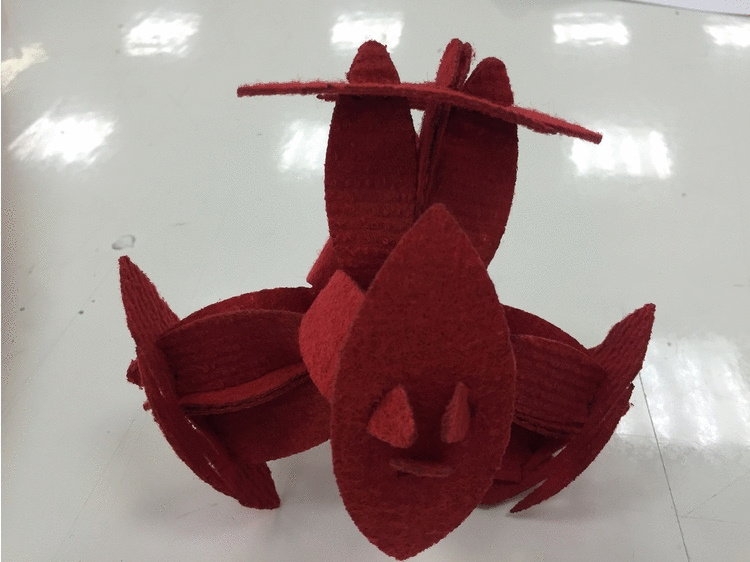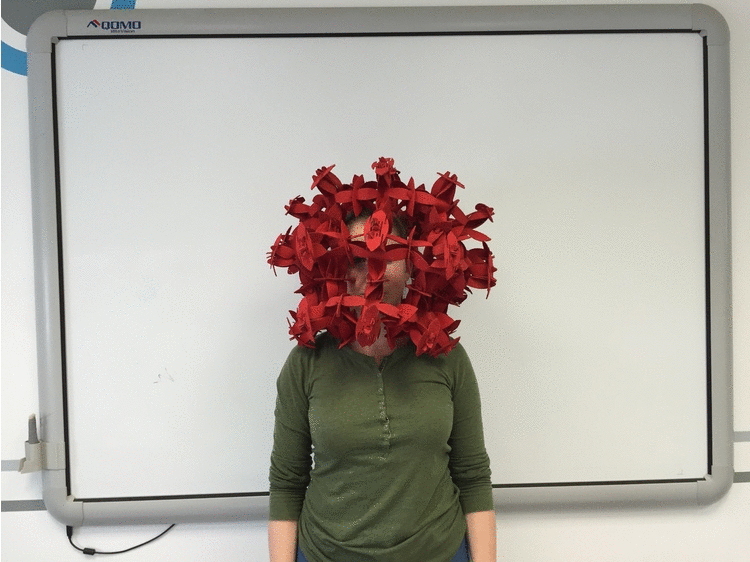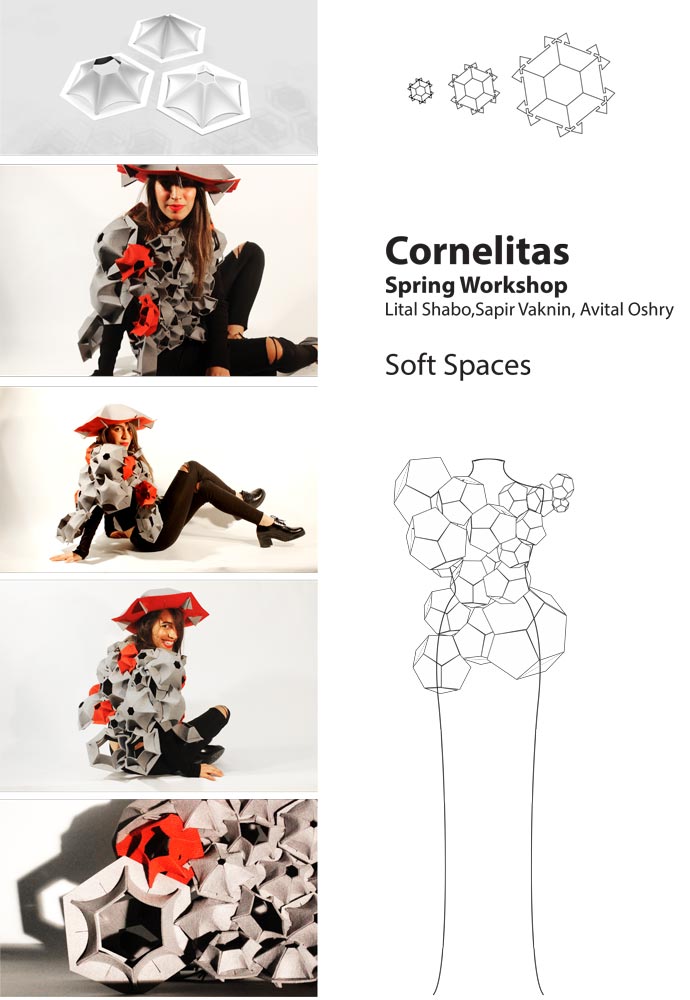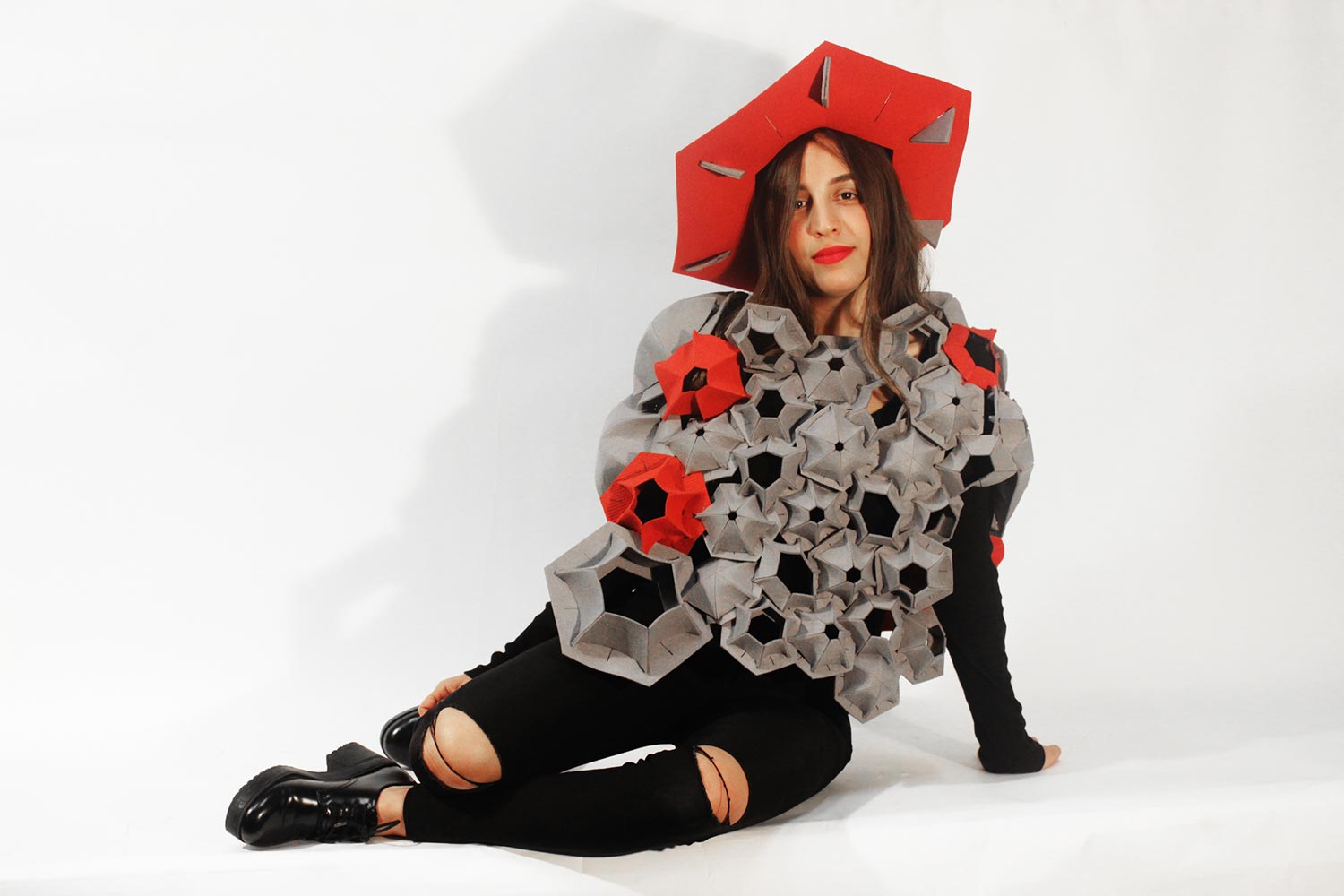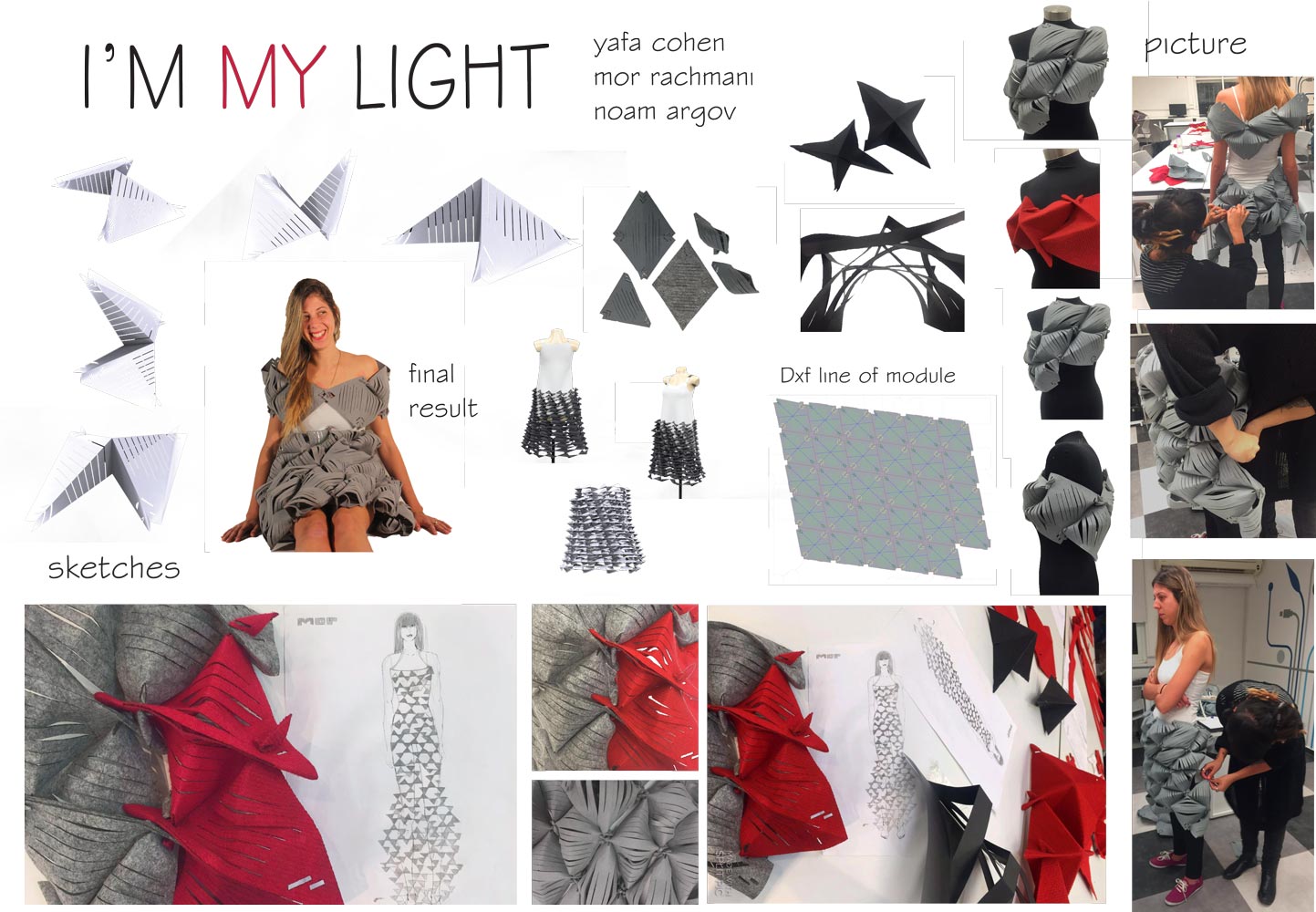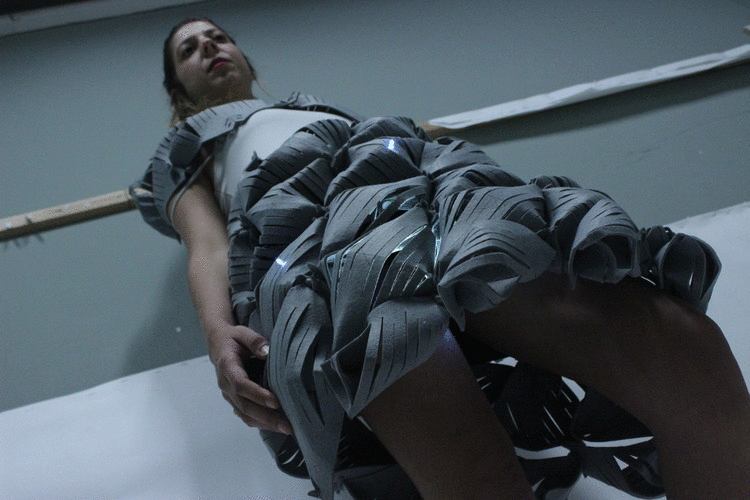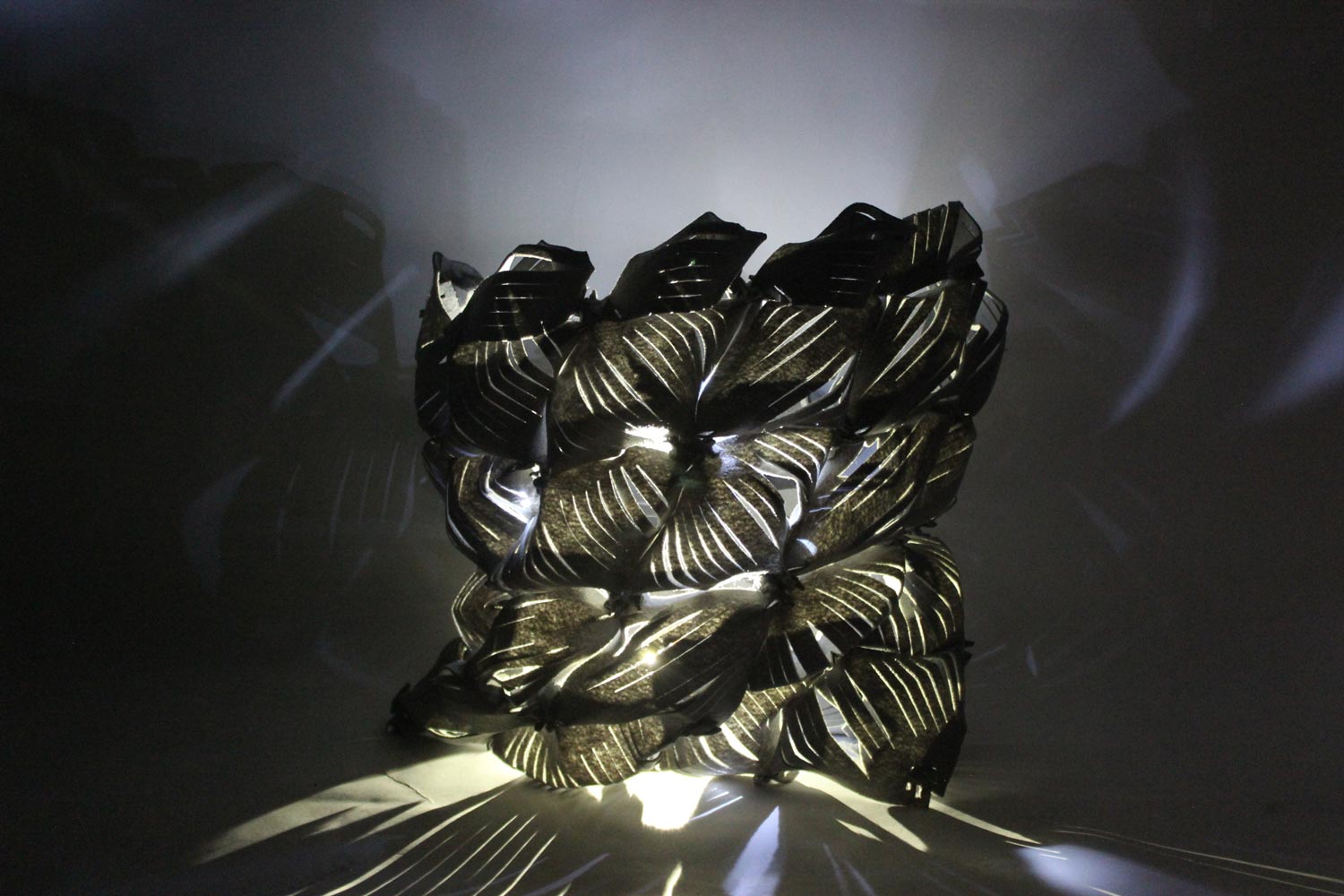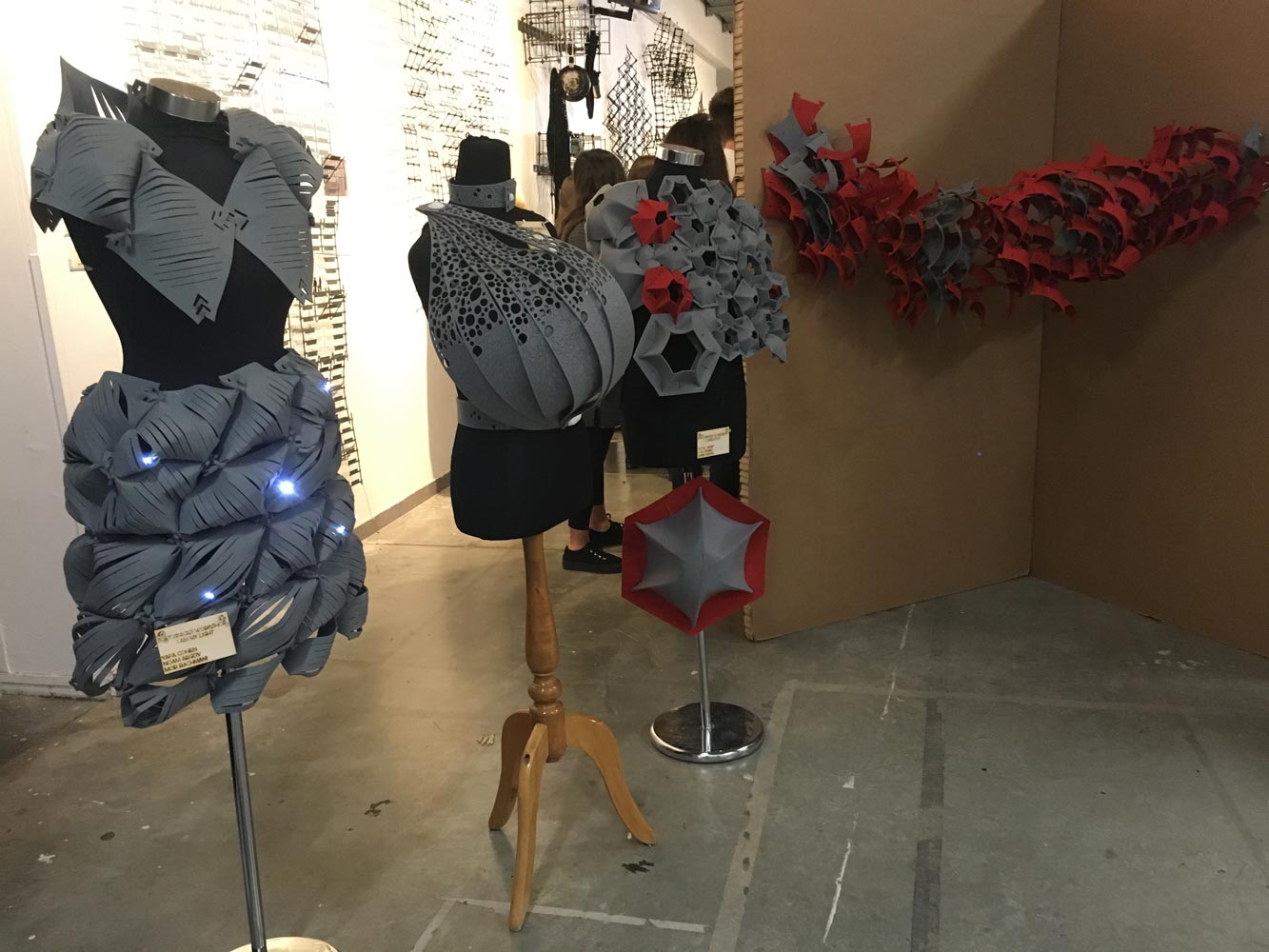This tutorial gives an insight into the correct choice for fabric and appropriate 3D geometries that give properties to the soft structure.
workshop fab lab
Fab Textiles Bootcamp
This tutorial gives an insight into the correct choice for fabric and appropriate 3D geometries that give properties to the soft structure.
Dress up Workshop Tel Aviv
We got invited to the international workshops of the College of Management Academic Studies, COMAS in Tel Aviv, Israel and the FabLabIL with a proposal for a workshop on “Soft Space”
Soft Space is a seminar that explores new relationships between our body and the surrounding environment. Even if our body is 90% of the times enveloped in soft materials, we cannot declare the same with space and its architecture. What if we imagine a fluid , soft, maleable , interactive surrounding as an extension of our body?
Digital Fabrication and CAD-CAMM technologies give us easy and direct access to tools and create a fertile ground for experimentation.
Through the exploration of soft materials and different fabrication techniques we can design new interactions and perspectives about objects, our body and space.
As far as the program overview, if the workshop is an intensive course of 1week / 40hours (8h/day)
1.1. Processes and techniques – digital manufacturing
1.2. New materials, intelligents, reagents, soft, technicians, biomaterials
1.3. Space as body- extention of technology and the new body
1.4. Digital fabrication techniques on materials
1.5. The imaginary space
2.1. Laboratory project proposals
2.2 Fabrication Laboratory models
2.3. Submission of proposals.
2.4 Manufacture of selection of proposals in scale 1: 1 (Cut Laser- impression 3D- CNC milling – elecronic)
3D Print on Fabric – Ftex workshop Feb 2016
Print on Fabric
The process of printing on fabric is quite direct, you have to attach the fabric with black clips on the printing platform and readjusting the nozzle according to the fabric height.
After some experiments on different fabrics we ‘ve noticed that 1mm hole meshed fabric does not adhere properly on the surface. We have tried on viscose and on lycra and it works , still need more tests.
According to different fabrics and and 3d models you can impose forms on the fabrics, 3d volume, different weight and deformation.
Check this project here>










